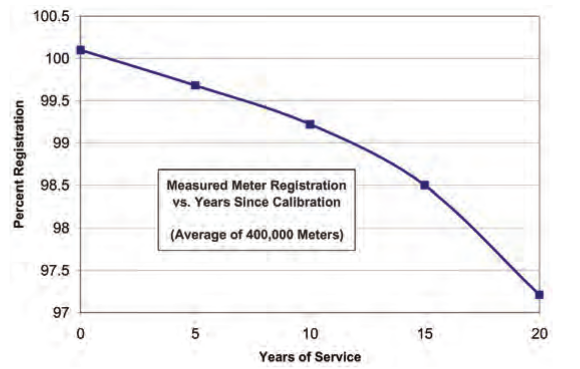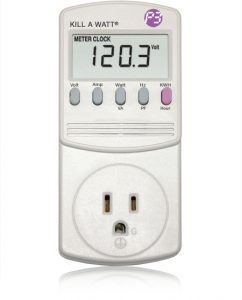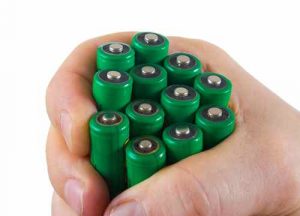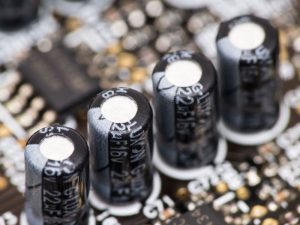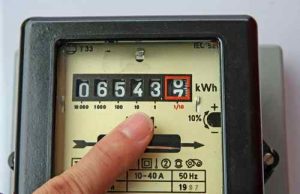Know your Electricity meter- electromechanical, electronic (digital), smart and dual register meters
The expenses incurred on electricity consumption are one of those expenses which one has to bear on a regular basis. Every month you receive a bill of the electricity which you have consumed through different appliances. When the bill is surprisingly higher in a certain month, you start thinking, “How come my bill is so high than the previous month, given that my electricity consumption pattern has been the same?” In fact, some people are also of the opinion that electronic meters run faster than electromechanical meters. So is it true? No.
If you have come across this situation, then let us assure you that you are not the only one who felt like this. In fact, we at Bijli Bachao regularly receive queries regarding the same issue wherein people say that despite their electricity usage being the same as the previous month, their electricity bills have spiked. A very important reason for this lies with electricity meters.
How does that happen? Let us see.
What are electricity meters (energy meters)?
An electricity meter is a device which measures the total electrical energy (or electricity) consumed by the appliances which draw electrical energy from the main power supply at a house or an official space and so on. Electricity meters are a common sight in the households today. When you look at a meter, what do you see? You see a few digits on it. What do these digits signify? These numbers (the reading on the meter) tells you how many units of electricity (mentioned as kWh in the meter) have you consumed so far. And your electricity bill is entirely dependent on this meter.
The reading on the meter is cumulative. So to determine the consumption reading of a particular month, the difference between the readings of that month and the previous month is calculated. The value which you get is the electricity consumption of that particular month. Now if this reading is small, it means that your consumption is low and consequently your electricity bill will be lower and if the reading is large, it means that your consumption is high and consequently your electricity bill will also be high.
What is electric energy?
Energy is the total work done. Electricity does work in your house and is measured in kWh. The voltage supplied to your house is multiplied with the current drawn and measured continuously to record VxAxh i.e. Wh and then divided by 1000 to get kWh which is also called ‘Unit’ of energy for any consumer to understand.
Types of electricity meters
With the advancement of technology, like any other gadget, the energy meter had also been undergoing continuous development towards accuracy, low power consumption, transfer of data, measuring parameters, anti-tempering features etc. and called Electro-mechanical, Electronic, Smart, dual register smart meter etc.
The electricity meters come in different types. These are:
Electromechanical meter
Electromechanical meters were very common in India a few years ago but no more. The working of electromechanical meters is fairly simple. There is a non-magnetic metallic disc 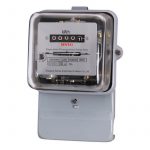 attached to it internally which rotates depending upon the power passing through it. So if the power passing through is high, then the disc rotates faster and when the passage of the power is low, the disc rotates slower. The rate of the rotation, in turn, decides the reading on the electricity meter. Higher the number of rotation, higher is the reading and vice-versa.
attached to it internally which rotates depending upon the power passing through it. So if the power passing through is high, then the disc rotates faster and when the passage of the power is low, the disc rotates slower. The rate of the rotation, in turn, decides the reading on the electricity meter. Higher the number of rotation, higher is the reading and vice-versa.
Since there is a rotation of a disc involved, it is bound to consume some electrical energy itself to facilitate the rotations. The power of around 2 Watt is consumed to make it rotate and this power consumption is not registered on the meter.
Electronic meter
Electronic meters are becoming increasingly popular nowadays. An electronic meter has a LED/LCD display on which the readings of the electricity consumption of the connected appliances. The readings are digital in the electronic meters in contrast to the 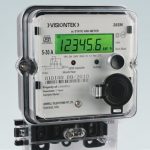 electromechanical meters. The meters are having sustainable life over 5 years, no wear and tear and measures accurately under any conditions, These are much more efficient than the electromechanical meters in the sense that they do register every small unit of electricity consumed.
electromechanical meters. The meters are having sustainable life over 5 years, no wear and tear and measures accurately under any conditions, These are much more efficient than the electromechanical meters in the sense that they do register every small unit of electricity consumed.
Measures accurately in the various tempered condition such as reverse tamper, earth tamper, immune to DC influence and distribute phase sequence.
Check description and price of 5-30A at Amazon
Smart meter
Smart meters are the newest addition to the type of electricity meters. They look similar to electronic meters but they are better than both the electromechanical meters and the electronic meters in the sense that in addition to providing the usual services of a regular meter, they are connected back to the utility through the internet. It means that there is no need for an official from the utility (which provides you with electricity) to come at your doorstep and take the meter readings. The readings are automatically sent by the internet. Such meters save money for taking the reading, avoid any mistake of recording wrong reading, reading is sent in time to measure the total units consumed during the month.
Pre-paid Smart Meters
Pre-paid service is lesser-known but widely available. With this type of service, you have a credit balance that you already paid for, and this balance is reduced as you use electricity. There are no deadlines or monthly bills. Under this system you can pay what you want, when you want, provided you maintain a balance. The responsibility is on you to keep up the balance. This system is becoming popular with the utility since the money is paid in advance they normally provide some discount in the energy bill as well (UPPCL provides 2% rebate for prepaid energy meters).
Post-paid Smart Meters
Postpaid service is the most common electrical service payment scheme. The consumer use the electricity first and are billed for what you have used in scheduled intervals (mostly monthly). Once billed, you have a set time such as fifteen days to pay the amount due. Failure to pay often incurs late fees or other penalties. Continued failure to pay can result in disconnection and collection action.
The power company normally takes three-month advance based on the expected energy consumption so that in case of non-payment, the outstanding is adjusted against the security.
There are pre-paid and post versions in this category. Pre-paid is also becoming popular as the DISCOMs give rebate in the energy bill to the extent of 2% (UPPCL) in your energy bill.
Dual Register Smart Energy Meter
Dual Register Meters as the name suggest measures and record energy consumed from two different sources mainly DISCOM and DG. These energy meters are having features of prepaid energy charges separately for DG and DISCOM and also the disconnection features if balance is not adequate of any of the source as per the set value. Disconnection can be programmed for day time only. One can monitor the live reading of the consumption of DISCOM and DG.
These energy meters are not popular with DISCOM so far. It is being provided by the builders availing single point connection from DISCOM in a multi-storied housing society where an alternative source of supply is from DG.
Kill a Watt Meter
A Kill A Watt meter (originally a KiloWatt meter) is a device which is capable of measuring the electricity consumption of the appliance directly connected to it. It was first manufactured by P3 International. It has an LCD display which shows various readings like the voltage, current, true power, reactive power, apparent power, power factor, energy consumed in kWh for the connected appliance. Some models also display an estimated cost pertaining to the number of units consumed.
Check description and price at Amazon
The advantage of the kill a watt meter to understand the energy consumption pattern of high energy consumption sources such as AC etc. It is advisable to have Kill a Watt meter installed with each of your AC to monitor the consumption so that you don’t get a shock of high energy consumption during summer and can well control if you desire so. Read more on kill a watt meter.
Specification of Energy Meter as per IS 13779 (1999)
The basic current 10A and a maximum current of 60 A, Voltage plus 20% and minus 40% of the reference voltage, starting current 0.2% of basic current, short-time overcurrent 1800 A for 0.01 sec, impulse withstand voltage 8kV, AC withstand voltage for 1 min is 4 kV, fire retardant material of the body, electromagnetic compatibility, measures energy including due to harmonics, flashing LED visible from the front, meter calibrated at the factory and modification in calibration shall not be possible at the site by any means and certificated by the manufacturer.
Measuring Parameters
Cumulative kWh ( meaning thereby the consumption in the period to be found out by subtracting the reading on date minus the previous reading), cumulative kVAH and power factor (where applicable, however, most of the domestic tariff is based on kWh except WB), Real-time and date, maximum demand, six-month history of energy consumed and MD, time of day tariff where applicable, monthly On/Off hours in the history, instantaneous voltage, instantaneous load kW, Meter Sl. no. etc.
Meter shall store MD in every 30 minutes period along with data and time. At the end of every 30 minutes new MD, shall be previous MD and store whichever is higher and the same shall be displayed. The MD resetting shall be automatic at the 1st of the month. Manual reset button shall not be available.
All these data shall be accessible for reading, recording and spot billing by downloading through an optical port with RS 232 compatibility to transfer data locally on CMRI or Laptop computer at the site and remote through PSTN/optical fibreGSMCDMA/RF/any other technology to the main computer.
Anti Tamper Features of Energy Meters
The meters are generally provided with many anti-tamper measures which detect the tampering and send an alarm signal to the main computer. Such anti-tamper provisions are as follows:
I/C & O/G wire interchanged, phase and neutral interchanged, I/C neutral disconnected, O/G neutral connected to earth through resistor and load connected to the earth, I/C neutral disconnected, I/C neutral and phase interchanged, single wire tamper (neutral missing), reverse energy, neutral wire energy measurement, welded meter body, tamper history.
No one shall try to tamper the energy meter either self or with the assistance of meter reading as the consequences can be a heavy penalty and also imprisonment.
Accuracy of Energy Meter
Accuracy of the energy meter is defined as the maximum error permitted in recording the energy over is the full scale of working. Mostly digital electronic meters are being provided and are with class 1.0 accuracy, meaning there,y that an energy meter e.g. of 5-30A rating is tested and compared with the High Precision Bench meter installed in the manufacturer place, the reading shall not vary more than plus/minus 1% over the full-scale range.
Defects of Energy Meter
Most common energy meters became defects are burnt out, external damage, a high reading etc.
The burning of energy meters is mostly due to loose connection at the terminal for which the customer should always be careful whenever replaced or newly installed or tampering. External damage is due to theft, hit by outsider etc. for such issues, the DISCOM generally ask for FIR before the replacement is accepted.
Most of the complaint, which is not apparent, is the high energy reading as against the usage of appliances or previous month consumption even no change in the pattern of consumption. Such issues will certainly arise when electro-mechanical meters were first changed by digital meter since the sensitivity of digital meter is very high and can sense even the mobile charging current which was not there with electro-mechanical meters. The best way to take care of this is to install a check meter and compare the two once in two months to be very sure about high meter reading. One can consider installing kill watt meter in the circuit of AC which consumes high energy.
Life of Energy Meter
The life of the digital meter can be taken the same as that of any electronic device ranging from 15 to 30 years. The only consumable is a real-time clock (RTC) which is operated with a battery. This battery if becomes defective prematurely, the meter may also give an erroneous reading.
Energy consumption of a digital meter
A digital meter or any other meter consumes energy for its functioning charged to the consumer. The power rating of the energy meter is about 1W. It means 24W in a day and 8.7 units per year.
Problems with the electromechanical meter
Although the electromechanical meters have been quite common in the past years, there are certain problems that are attributed to them. Since electromechanical meters consist of moving parts, they are bound to undergo some wear and tear with the passage of time.
In a study conducted by Analog Devices Inc. USA, it was found that the accuracy of a electromechanical meter deteriorates subject to the various environmental factors such as humidity, dust and dirt which significantly affect the operating accuracy of the electromechanical meter. Factors like corrosion, worn out gears and insects can render the electromechanical meter unable to capture the electricity consumption of a property accurately. The mechanical gear lubricants may dry up resulting in the breaking in the gear teeth which adversely affects the gear ratio. Also, the electromechanical meters may get miscalibrated if they experience a sudden shock or vibration which may cause a jolt or a sudden stoppage of the rotating disk.
The change in accuracy of electromechanical meters as it ages is shown below in a graph.
Source: Electric Power Research Institute (http://www.epri.com/Pages/Default.aspx)
Electronic meters are better than electromechanical meters because they do not contain moving parts in it which might get affected due to the various factors as listed above. Also, they provide not only the consumed units (as is the case of electromechanical meters) but they also provide other information like the instantaneous and maximum rate of usage demands, voltages, power factor and so on.
What to do if your meter reading is very high?
If you see a sudden rise in your electricity consumption which is confounding you, look for
- Had you the energy meter changed at your place? If an electromechanical meter has been recently replaced by an electronic, it is possible that you might experience such a situation. Rest assured, it does not mean that your consumption has increased. It is just that your old meter was not able to account for the minute power consumption which the electronic meter is capable to do, causing the sudden increase in electricity consumption;
- Installation of a check meter to compare the consumption to get the idea if the main meter is likely to be defective;
- Use kill a watt meter on the AC outlet to check the trend of your AC consumption;
- Check the supply code of your state and check the guidelines on Meter and the process provided there for replacement or checking of energy meter. The cost of a new energy meter to be given by the consumer since the cost of the original installation was also borne by him.
- Look for other options to save on energy bill and reduce demand by opting for energy-saving options like LED lamp, BLDC fan, Inverter base AC and refrigerator, switching off setup box, charging plug & AC from the mains instead from remote, etc.;
References:
http://en.wikipedia.org/wiki/Electricity_meter
http://www.analog.com/en/index.html
http://hyperphysics.phy-astr.gsu.edu/hbase/magnetic/movcoil.html

